The Story of the Great London Fire, or How a small candle changed the Capital
Categories: Catastrophes | Europe | History | World
By Pictolic https://pictolic.com/article/the-story-of-the-great-london-fire-or-how-a-small-candle-changed-the-capital.htmlBy the middle of the 17th century, London was a crowded city with narrow streets, in which houses were built of wood and covered with straw. Therefore, fires have ravaged London more than once, but the most "famous" was the Great Fire, which broke out on the night of September 2, 1666 and destroyed a third of the city in a few days.
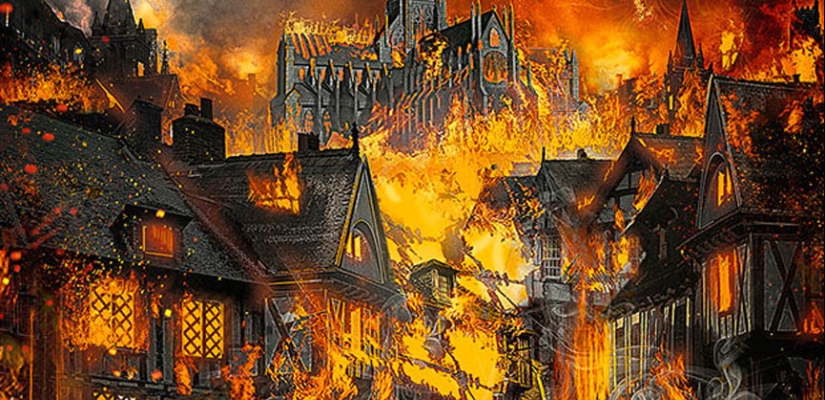
Large-scale fires that destroyed large cities to the ground for a long time were a phenomenon quite widespread in Europe. Often such disasters led to a complete restructuring that changed the city beyond recognition.
The main causes of catastrophic disasters were the predominance of wooden materials during construction, as well as the lack of a clear and well-thought-out fire extinguishing system.
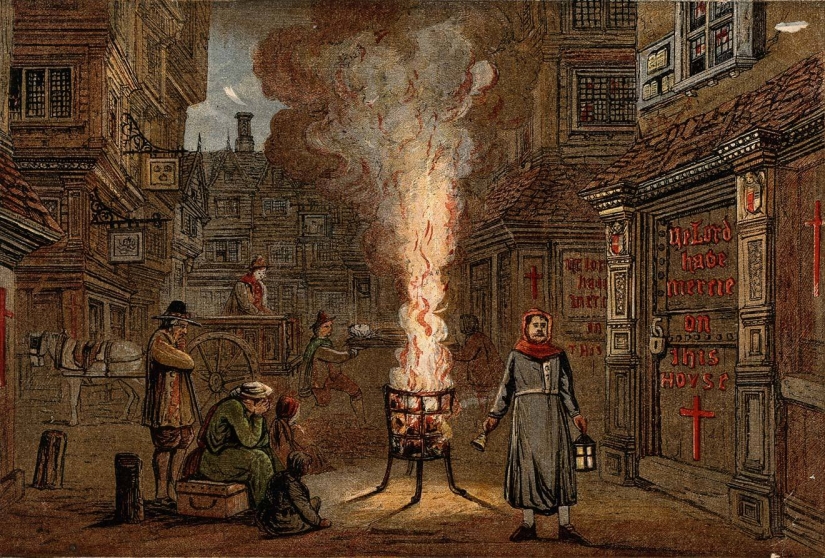
Many people in Europe were waiting for the onset of 1666 with fear — they did not expect anything good from the "number of the beast" in the numbering. At the same time, the living conditions on the Old Continent were such that it was not difficult to find a trouble, the cause of which could be attributed to the "Satanic year".
However, the residents of London were not up to new fears, since they were massively dying from the infection that appeared a year earlier. The plague epidemic, which broke out in 1665 in a city of almost half a million with a complete lack of sewerage, began with the port where ships from Holland arrived. By that time, 50,000 people had died from the plague in Amsterdam, and the British tried to somehow protect themselves from danger, but these measures did not give any result.
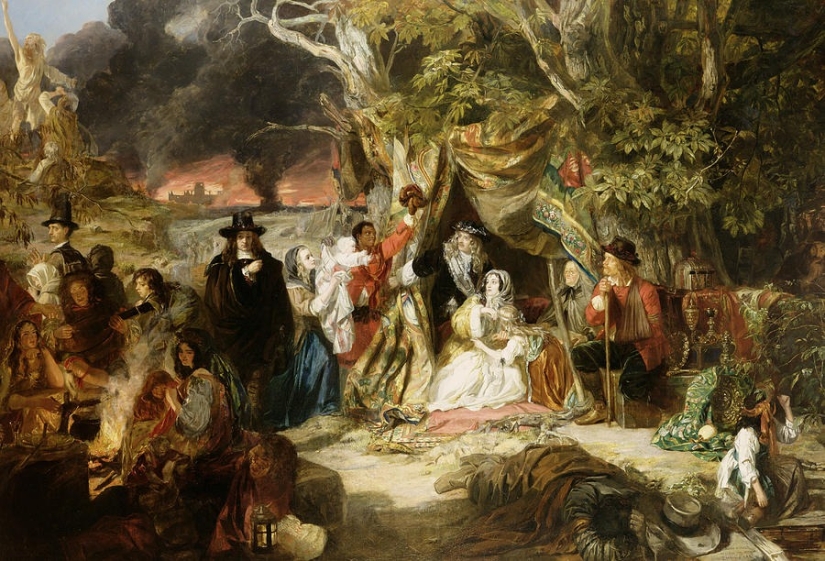
The first victims were London beggars who lived in the port, and then the plague gradually reached the City from the poor outskirts. King Charles II of England, along with his family and entourage, left London, deciding to take refuge in a place where you can protect yourself from meeting with infected people.
By the autumn of 1665, the death rate in London had increased to 7,000 people a week. In the city, mass graves for the dead, which were trenches, were filled before the diggers had time to complete the work.
In total, about 100,000 Londoners became victims of the epidemic, that is, one in five residents of the city. Therefore, by the beginning of the autumn of 1666, the devil himself was not a brother to the English — the survivors were not afraid of any gloomy omens.
One of the reasons for the rapid spread of the plague was the crowding of the population in poor areas. She also became the cause of a new trouble.
There was no clear plan for the development of London by 1666. Wooden houses, sometimes built from the cheapest types of wood, were piled on top of each other. Since there have been major fires in London more than once, the construction of wooden houses with thatched roofs was officially prohibited, but this ban was simply ignored. The poor could not afford stone houses, so they continued to build themselves shacks from the cheapest materials.
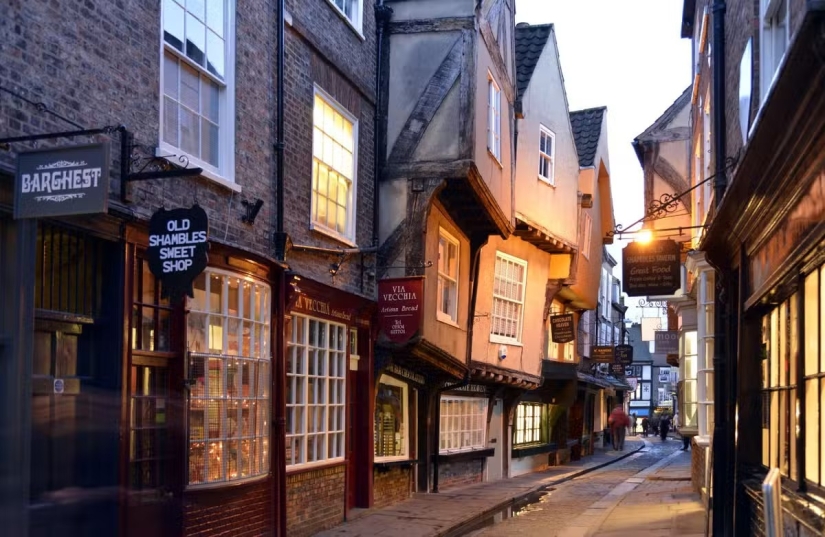
In the coastal zone of the Thames, the poorest neighborhoods were located with shops and basements containing combustible materials, with wooden apartment buildings. There were also warehouses with large stocks of gunpowder.
There was no specialized fire protection in London — locals gathered at the sound of the bell, trying to extinguish the flames with water. If this did not work out, then they tried to forestall the fire by breaking wooden buildings in the path of the flame that had not yet caught fire.
The success of fighting fire in such a situation depended more on the weather than on human efforts.
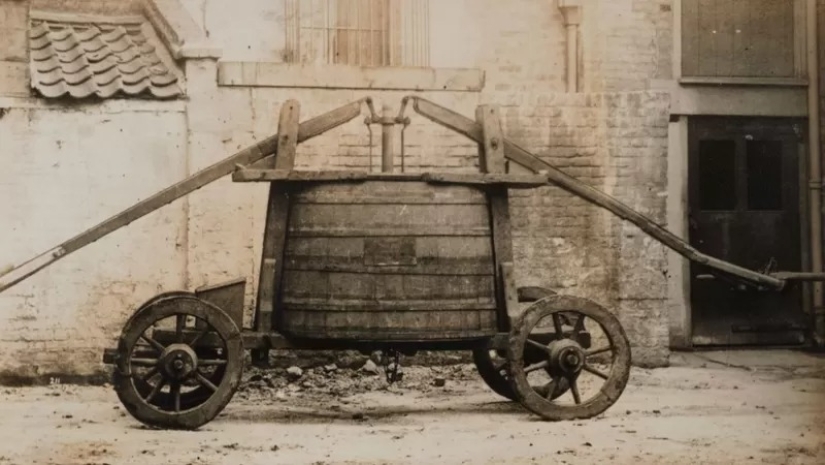
It all started on September 2, 1666, at Thomas Farriner's bakery on Pudding Lane. Bakers began to work even after dark, using ordinary candles for lighting. One of the candles fell on the wooden floor, and soon the flames began to spread rapidly through the house. Farriner's family escaped by moving to their neighbors through a window on the top floor — houses, we recall, in London at that time were often located close to each other. But Farriner's maid was so scared that she was literally paralyzed, and she could not leave the house, becoming the first victim of the fire.
The Farriners extinguished the burning building together with their neighbors, but they could not cope with the flames. Volunteers who have been through a lot of fires have noticed that it is best to destroy the surrounding houses to stop the further spread of the disaster.
But the owners of the houses resisted, and the Lord Mayor of London, Thomas Bloodworth, arrived to decide what to do. While the mayor was sorting out, the fire began to spread to outbuildings.
"Are we destroying it?" the volunteers asked.
"It's impossible," Bloodworth resisted, "We haven't found all the owners and tenants!"
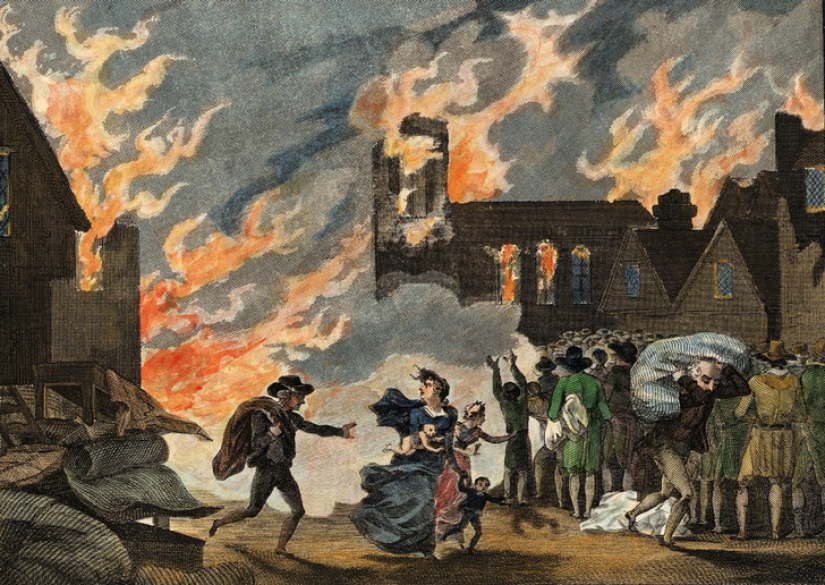
Apparently, he was just afraid to take responsibility, hoping that the fire would somehow calm down by itself. But the past hot summer with a small amount of rain has created all the conditions for houses to flare up like matches. A strong wind, which rose that day in London, began to rapidly spread the flames across the English capital.
A few hours later, the fire was reported to the king. The flames were going so fast that the affluent areas of the city were also under threat. Charles II was determined — he gave the order to destroy houses without hesitation. Also, the royal guard headed by the king's brother, the Duke of York, the future monarch James II, went to fight the fire.
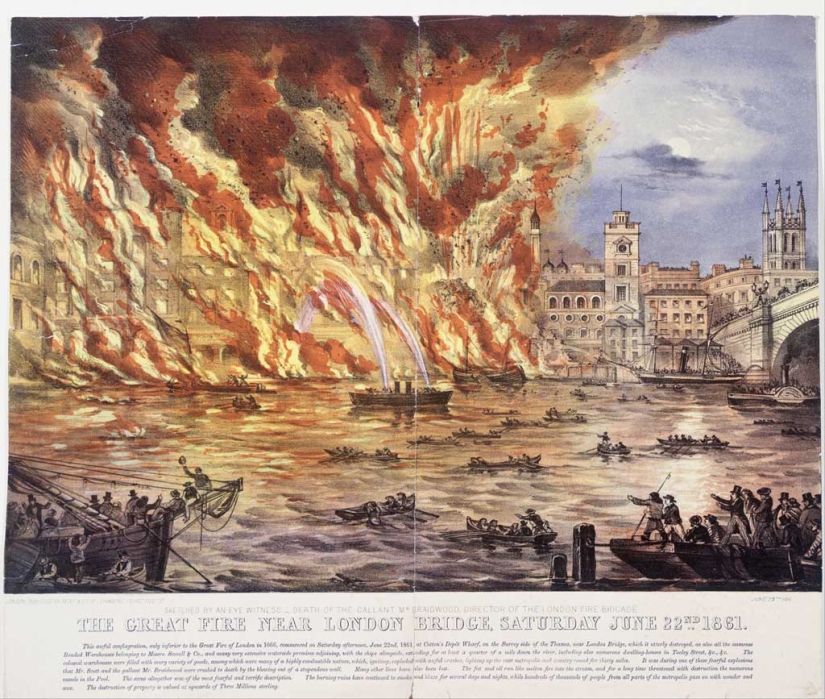
But the moment was already lost. The so-called fire tornadoes began to spread around the city, when individual fire centers under the influence of air masses unite, which is why a burning area with a very high temperature reaching up to 800 degrees is formed.Gorenje At the same time, the fire tornado moves extremely fast.
Witnesses of the fire wrote later that by the morning of September 3, "it was not possible to stop the fire." Panic began — people tried to leave the city, taking out on carts the property that they managed to take with them.
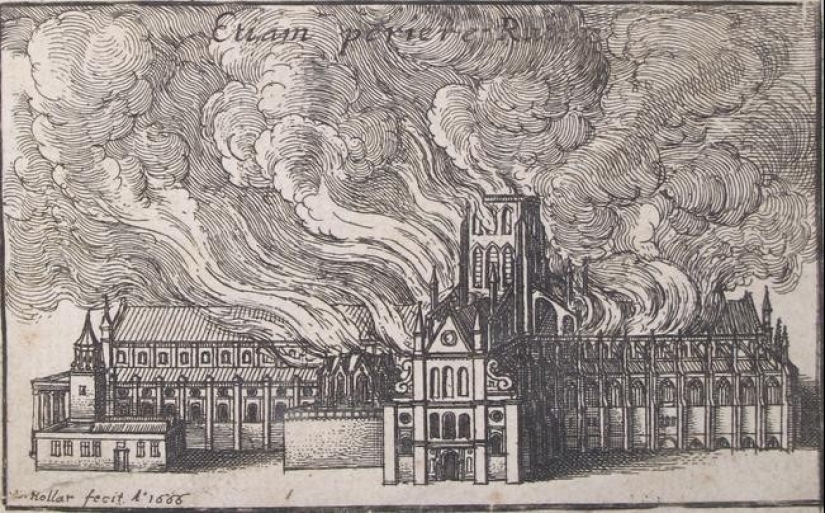
The hopes of the participants in the extinguishing that the fire would be stopped by major obstacles turned out to be untenable. First, Baynards Castle, the historic residence of the English kings, fell, followed by St. Paul's Cathedral. The stone temple, which was considered a safe haven, was brought down by wooden scaffolding, which was put up for repair. The fire spread to them, then engulfed the roof, and after it collapsed, all the property in the cathedral caught fire. There was a lot of it there — the locals took their valuables there as a temporary shelter, believing that the stone building would avoid the worst.
The English writer John Evelyn recalled what was happening:
Only on September 5, when the wind weakened, the efforts of volunteer firefighters and the Royal Guard began to bear fruit. The fire-prevention strips created from the destroyed houses stopped the further advance of the flame. The open gorenje gradually began to turn into smoldering.
In total, 13,500 houses, 87 parish churches, 44 livery company buildings, the Royal Exchange, St. Paul's Cathedral, several prisons, as well as three city gates were destroyed.
In fact, London in its former form ceased to exist, turning into a huge ashes.
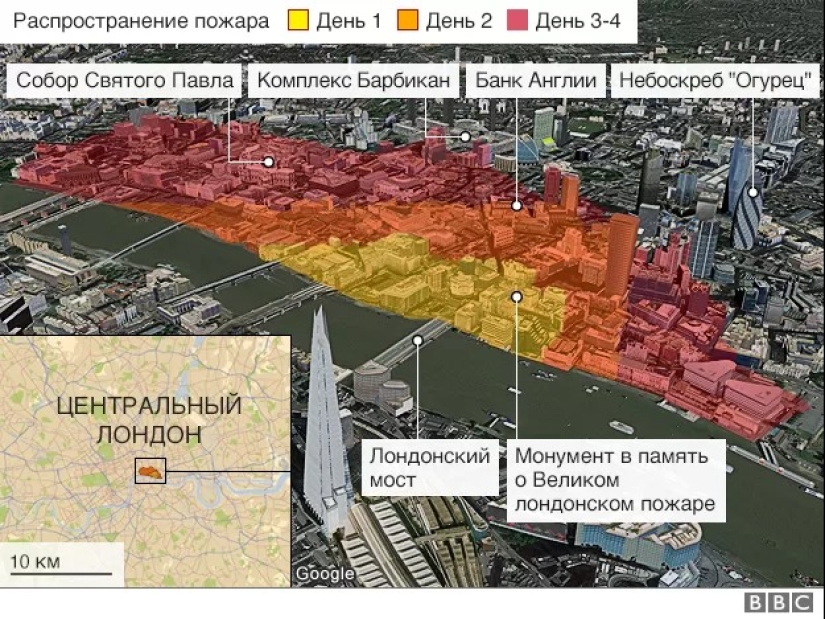

Despite the grand scale of the disaster, information about the dead was extremely scarce. Contemporaries wrote about only a few victims of the fire. However, there is an assumption that it is not the absence of the dead, but that they were representatives of the poor. In addition, due to the extremely high burning temperature, the remains of the victims could simply burn to the ground. Gorenje.
When they managed to cope with the fire, the residents of London began to look for an answer to the following question: who is to blame? First of all, foreigners were suspected, believing that they could thus take revenge on England for participating in military conflicts. There were cases of lynching, the victims of which were primarily the French and the Dutch.
A certain Frenchman Robert Hubert was detained and accused of having committed arson, which caused a catastrophic fire. Tortured, the man admitted his guilt. On September 28, 1666, he was publicly hanged. It was only after the execution that it became known that Hubert was not in London at all at the time of the fire.
In 1667, the Royal Council ruled that the devastating fire was caused by a combination of circumstances and adverse weather conditions.

The planning of the reconstruction of the burnt-out areas of London was entrusted to the famous architect and mathematician Christopher Wren. And although his plan could not be fully implemented due to the lack of necessary finances in the treasury, London was transformed. Wooden houses gave way to stone ones, the distance between buildings was increased, various warehouses were moved away from residential buildings. Thanks to Ren, the sanitary situation in the city has also improved.
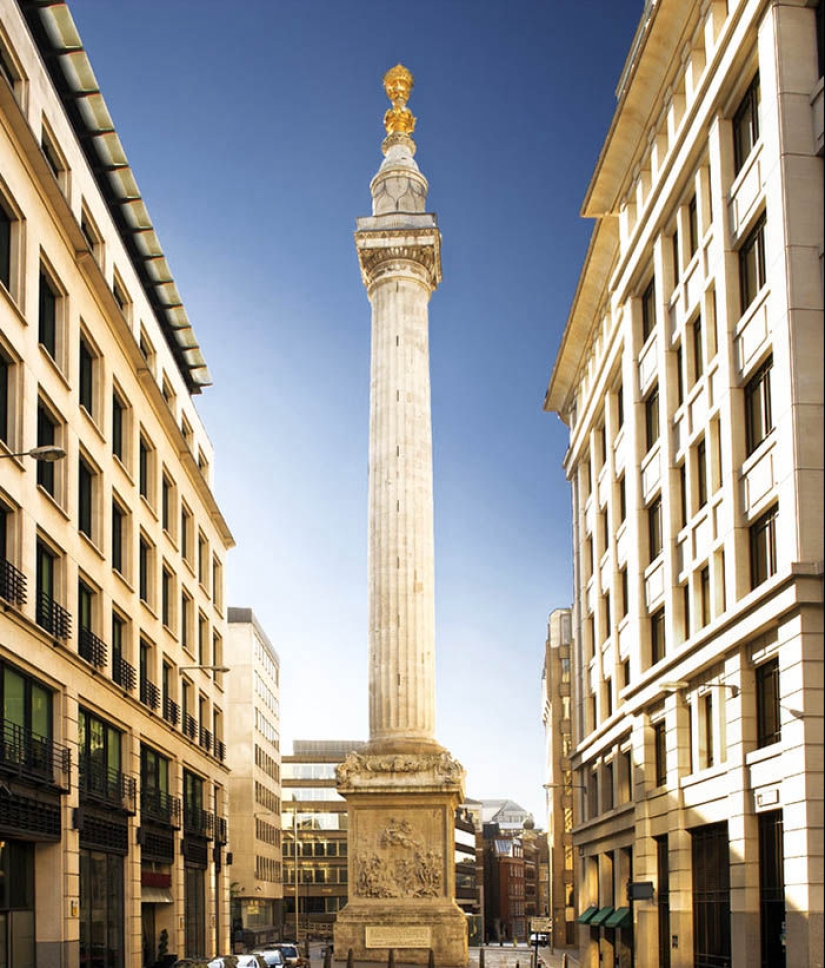
The fire of 1666 was the impetus for the emergence of fire insurance services in Britain. After the incident, no one needed to explain why it was necessary, and the business of insurers developed extremely successfully.
It is believed that the fire helped to cope with the plague epidemic: after London burned to the ground, new cases of the disease were practically not registered.
Recent articles

In November 69 BC, she was born Cleopatra, the last Queen of Egypt from the Macedonian dynasty of the Ptolemies. Cleopatra, perhaps ...

Explosions of smartphone batteries and short circuits in sockets no longer become a sensation, but few people know that the danger ...

It is believed that the appearance of gray hair — it is a sign of aging, the gradual extinction of the organism. Many ...